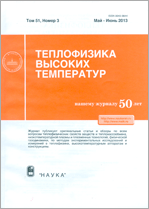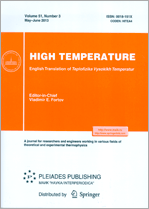|
This article is cited in 2 scientific papers (total in 2 papers)
Thermophysical Properties of Materials
Thermal conductivity of alkali metal chlorides: calculation with molecular dynamics method
D. O. Zakir'yanov, N. K. Tkachev
Institute of High-Temperature Electrochemistry, RAS
Abstract:
The classical molecular dynamics method was used to calculate the thermal conductivity of molten salts $\rm MCl\,(\rm M = \rm Li{,}\,\rm Na{,}\,\rm K{,}\,\rm Rb{,}\,\rm Cs)$ in the temperature range of two hundred degrees above the melting temperatures. The simulated system had $4000$ nonequivalent ions ($2000$ metal and chlorine ions each) with periodic boundary conditions. The Born–Mayer potential with the Coulomb term was used in the simulation. It is shown that the thermal conductivity of alkali metal chlorides decreases with an increase in the cation number in line $\rm Li^+ \to \rm Na^+ \to \rm K^+ \to \rm Rb^+ \to \rm Cs^+$. Moreover, the thermal conductivity for all melts weakly depends on temperature.
Received: 14.06.2018
Revised: 10.01.2019
Accepted: 22.10.2019
Citation:
D. O. Zakir'yanov, N. K. Tkachev, “Thermal conductivity of alkali metal chlorides: calculation with molecular dynamics method”, TVT, 58:1 (2020), 51–54; High Temperature, 58:1 (2020), 54–57
Linking options:
https://www.mathnet.ru/eng/tvt11074 https://www.mathnet.ru/eng/tvt/v58/i1/p51
|


| Statistics & downloads: |
| Abstract page: | 137 | | Full-text PDF : | 125 | | References: | 28 |
|





 Contact us:
Contact us: Terms of Use
Terms of Use
 Registration to the website
Registration to the website Logotypes
Logotypes








 Citation in format
Citation in format 
